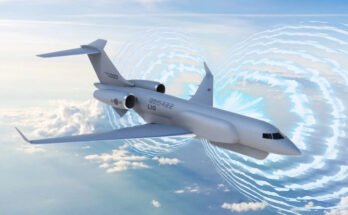The Indonesian government of President Joko Widodo has proposed a 3 percent increase to the national budget for 2020, with defense earmarked for a boost of 16% percent in year-on-year nominal investment. The defense budget – currently receiving an outlay of IDR109.6 trillion ($7.68 billion) – is set to rise to IDR127.4 billion ($8.9 billion) under the government proposal and will equal 5 percent of total spending.
Currently, Indonesia’s defense budget accounts for roughly 4.3 percent of total governmental expenditure.
The latest budgetary proposal follows Joko Widodo’s re-election in April and is based upon an economic growth target of 5.3 percent for next year. That would match the government target for the current year, which appears to be slightly optimistic in light of falling prices for key Indonesian export commodities such as palm oil.
Since 2005, successive Indonesian governments have stated an aim to bring the country’s defense budget up to 1.5 percent of GDP, including Widodo, who campaigned for office in 2014 with a pledge to achieve that target by 2019.
But despite such promises – and a stretch of budgetary growth between 2011 and 2015 in which topline defense spending more than doubled – the current military earmark equals just 0.7 percent of GDP, thereby demonstrating the outstanding gap between objectives and actuality.
Achieving the 1.5 percent of GDP benchmark is in line with Indonesia’s larger military reform goal of creating a force-of-scale capable of meeting the minimum response required to deal with a variety of strategic threats by 2024. This end-goal is referred to as the Minimum Essential Force modernization program. The MEF involves recruiting, retaining, housing, equipping, and training a force that is able to deploy the minimal assets necessary to conduct counterinsurgency operations, international peacekeeping missions, and natural disaster relief operations, as well as provide offshore and exclusive economic zone (EEZ) protection.
With a territorial footprint covering some 750,000 square miles, including roughly 18,000 islands, plus its geographical reality as the world’s largest archipelago state featuring 54,720 kilometers (34,000 miles) of coastline, the challenges Indonesia faces in ensuring national defense, and in professionalizing the armed forces, are enormous. The country shares maritime borders across strategic narrow strait waterways with Singapore, Malaysia, and the Philippines in the north and Australia in the south.
More recently, China’s territorial ambitions and expanding maritime reach have brought Indonesia a new form of pressure. Beijing’s claim to the South China Sea runs up against Indonesia’s Natuna Islands, thus eliciting disagreements over what China sees as overlapping fishing rights. As a result of incidents with Chinese fishing boats and Coast Guard vessels, since September 2015 Indonesia has been shifting more military resources toward the Natuna Islands, including opening a military base on one of the islands in December 2018.
Dan Darling is Forecast International’s director of military and defense markets. In this role, Dan oversees a team of analysts tasked with covering everything from budgeting to weapons systems to defense electronics and military aerospace. Additionally, for over 17 years Dan has, at various times, authored the International Military Markets reports for Europe, Eurasia, the Middle East and the Asia-Pacific region.
Dan's work has been cited in Defense News, Real Clear Defense, Asian Military Review, Al Jazeera, and Financial Express, among others, and he has also contributed commentary to The Diplomat, The National Interest and World Politics Review. He has been quoted in Arabian Business, the Financial Times, Flight International, The New York Times, Bloomberg and National Defense Magazine.
In addition, Dan has made guest appearances on the online radio show Midrats and on The Media Line, as well as The Red Line Podcast, plus media appearances on France 24 and World Is One News (WION).




